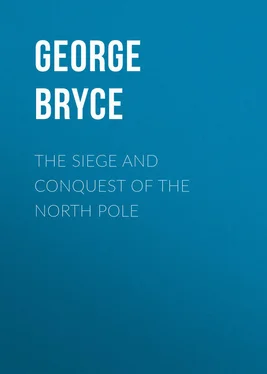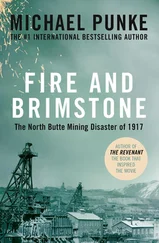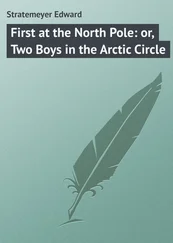George Bryce - The Siege and Conquest of the North Pole
Здесь есть возможность читать онлайн «George Bryce - The Siege and Conquest of the North Pole» — ознакомительный отрывок электронной книги совершенно бесплатно, а после прочтения отрывка купить полную версию. В некоторых случаях можно слушать аудио, скачать через торрент в формате fb2 и присутствует краткое содержание. Жанр: foreign_antique, foreign_prose, на английском языке. Описание произведения, (предисловие) а так же отзывы посетителей доступны на портале библиотеки ЛибКат.
- Название:The Siege and Conquest of the North Pole
- Автор:
- Жанр:
- Год:неизвестен
- ISBN:нет данных
- Рейтинг книги:5 / 5. Голосов: 1
-
Избранное:Добавить в избранное
- Отзывы:
-
Ваша оценка:
- 100
- 1
- 2
- 3
- 4
- 5
The Siege and Conquest of the North Pole: краткое содержание, описание и аннотация
Предлагаем к чтению аннотацию, описание, краткое содержание или предисловие (зависит от того, что написал сам автор книги «The Siege and Conquest of the North Pole»). Если вы не нашли необходимую информацию о книге — напишите в комментариях, мы постараемся отыскать её.
The Siege and Conquest of the North Pole — читать онлайн ознакомительный отрывок
Ниже представлен текст книги, разбитый по страницам. Система сохранения места последней прочитанной страницы, позволяет с удобством читать онлайн бесплатно книгу «The Siege and Conquest of the North Pole», без необходимости каждый раз заново искать на чём Вы остановились. Поставьте закладку, и сможете в любой момент перейти на страницу, на которой закончили чтение.
Интервал:
Закладка:
On the 19th November, one of the Esquimaux, Peter, disappeared. For some time Hayes had observed a rivalry between Hans and Peter, and he took the side of the latter. Hans was jealous of every act of favour towards Peter, and Hayes was inclined to believe that Hans had been the means of frightening Peter and of making him run off. No news was received as to his whereabouts until months afterwards, when some Esquimaux found his dead body in a hut a long distance from the ship.
Early in December a serious disease attacked the dogs, similar to what Kane had to deal with. Hayes had at this time thirty-six, and the first attacked by the disease was shot. However, seven died within four days, and during the first two weeks of December eighteen died. At the end of the following week only nine dogs were left. This was a serious blow to Hayes, as he relied chiefly on the dogs for transport across the ice. It was now necessary to devise means for remedying the loss, or to arrange new plans in conformity with the changed circumstances. The first expedient which suggested itself was to open communication with the Esquimaux of Whale Sound, from whom some animals might be obtained. From Hans it was learned that there was a family living on Northumberland Island, several families on the south side of Whale Sound, and possibly one or more on the north side. Northumberland Island was about 100 miles distant, and the south side of the Sound about 150. It was decided that if a sufficient number of dogs remained alive when the moon came in December, Sonntag should make the journey at that period, taking a single sledge, and Hans for a driver. They set out on the 21st December, and nothing was heard of them until the 29th January, when two Esquimaux arrived with the news that Sonntag had died. Hans appeared two days afterwards, and told his story: —
“The travellers rounded Cape Alexander without difficulty, finding the ice solid; and they did not halt until they had reached Sutherland Island, where they built a snow-hut and rested for a few hours. Continuing thence down the coast, they sought the Esquimaux at Sorfalik without success. The native hut at that place being in ruins, they made for their shelter another house of snow; and after being well rested, they set out directly for Northumberland Island, having concluded that it was useless to seek longer for natives on the north side of the sound. They had proceeded on their course about 4 or 5 miles, as nearly as I can judge from Hans’s description, when Sonntag, growing a little chilled, sprang off the sledge and ran ahead of the dogs to warm himself with the exercise. The tangling of a trace obliging Hans to halt the team for a few minutes, he fell some distance behind, and was hurrying on to catch up, when he suddenly observed Sonntag sinking. He had come upon the thin ice, covering a recently open tide-crack, and, probably not observing his footing, he slipped upon it unawares. Hans hastened to his rescue, aided him out of the water, and then turned back for the shelter which they had recently abandoned. A light wind was blowing at the time from the north-east, and this, according to Hans, caused Sonntag to seek the hut without stopping to change his wet clothing. At first he ran beside the sledge, and thus guarded against danger; but after a while he rode, and when they halted at Sorfalik, Hans discovered that his companion was stiff and speechless. Assisting him into the hut with all possible dispatch, Hans states that he removed the wet and frozen clothing, and placed Sonntag in the sleeping-bag. He next gave him some brandy which he found in a flask on the sledge; and, having tightly closed the hut, he lighted the alcohol-lamp, for the double purpose of elevating the temperature and making some coffee; but all his efforts were unavailing, and, after remaining for nearly a day unconscious, Sonntag died. He did not speak after reaching the hut, and left no message of any kind.”
Hayes was not altogether satisfied with the explanation given by Hans. He wrote; “Although I have no good reason for doubting the truth of his narrative, yet I cannot quite reconcile my mind to the fact that Sonntag, with so much experience to govern him, should have undertaken to travel 5 miles in wet clothing, especially as he was accompanied by a native hunter who was familiar with all of the expedients for safety upon the ice-fields, and to whom falling in the water is no unusual circumstance. The sledge and the canvas apron which enclosed the cargo furnished the means for constructing a temporary shelter from the wind, and the sleeping-bag would have insured against freezing while Hans got ready the dry clothing, of which Sonntag carried a complete change. Nor can I understand how he should have lived so long and have given Hans no message for me, nor have spoken a word after coming out of the water, further than to have ordered his driver to hasten back to the snow-hut. However, it is idle to speculate about the matter; and since Hans’s interests were concerned in proving faithful to the officer who, of all those in the ship, cared most for him, it would be unreasonable as well as unjust to suspect him of desertion.”
Towards spring, Hayes had the body of Sonntag brought to Port Foulke and buried. “And here,” writes Hayes, “in the drear solitude of the Arctic desert, our comrade sleeps the sleep that knows no waking in this troubled world, – where no loving hands can ever come to strew his grave with flowers, nor eyes grow dim with sorrowing; but the gentle stars, which in life he loved so well, will keep over him eternal vigil, and the winds will wail over him, and Nature, his mistress, will drop upon his tomb her frozen tears for evermore.”
When Hans returned from his visit to the Esquimaux, he brought with him his wife’s father and mother. Hayes gives the following description of them: —
“The personal appearance of this interesting couple was not peculiarly attractive. Their faces were broad, jaws heavy, cheek-bones projecting like other carnivorous animals, foreheads narrow, eyes small and very black, noses flat, lips long and thin, and when opened, there were disclosed two narrow, white, well-preserved rows of polished ivory, – well worn, however, with long use and hard service, for the teeth of the Esquimaux serve a great variety of purposes, such as softening skins, pulling and tightening cords, besides masticating food, which I may here mention is wholly animal. Their hair was jet black, though not abundant, and the man had the largest growth of beard which I have seen upon an Esquimaux face, but it was confined to the upper lip and the tip of the chin. The face of the Esquimaux is indeed quite Mongolian in its type, and is usually beardless. In stature they are short, though well built, and bear, in every movement, evidence of strength and endurance.
“The dress of the male and female differed but little one from the other. It consisted of nine pieces – a pair of boots, stockings, mittens, pantaloons, an under-dress, and a coat. The man wore boots of bear-skin, reaching to the top of the calf, where they met the pantaloons, which were composed of the same materials. The boots of the woman reached nearly to the middle of the thigh, and were made of tanned seal-skins. Her pantaloons, like her husband’s, were of bear-skin. The stockings were of dog-skin, and the mittens of seal-skin. The under-dress was made of bird-skins, feathers turned inwards; and the coat, which did not open in front, but was drawn on over the head like a shirt, was of blue fox-skins. This coat terminates in a hood which envelops the head as completely as an Albanian capote or a monk’s cowl. This hood gives the chief distinction to the dresses of the sexes. In the costume of the man it is round, closely fitting the scalp, while in the woman it is pointed at the top to receive the hair which is gathered up on the crown of the head, and tied into a hard, horn-like tuft with a piece of raw seal-hide, – a style of coiffure which, whatever may be its other advantages, cannot be regarded as peculiarly picturesque.
Читать дальшеИнтервал:
Закладка:
Похожие книги на «The Siege and Conquest of the North Pole»
Представляем Вашему вниманию похожие книги на «The Siege and Conquest of the North Pole» списком для выбора. Мы отобрали схожую по названию и смыслу литературу в надежде предоставить читателям больше вариантов отыскать новые, интересные, ещё непрочитанные произведения.
Обсуждение, отзывы о книге «The Siege and Conquest of the North Pole» и просто собственные мнения читателей. Оставьте ваши комментарии, напишите, что Вы думаете о произведении, его смысле или главных героях. Укажите что конкретно понравилось, а что нет, и почему Вы так считаете.












